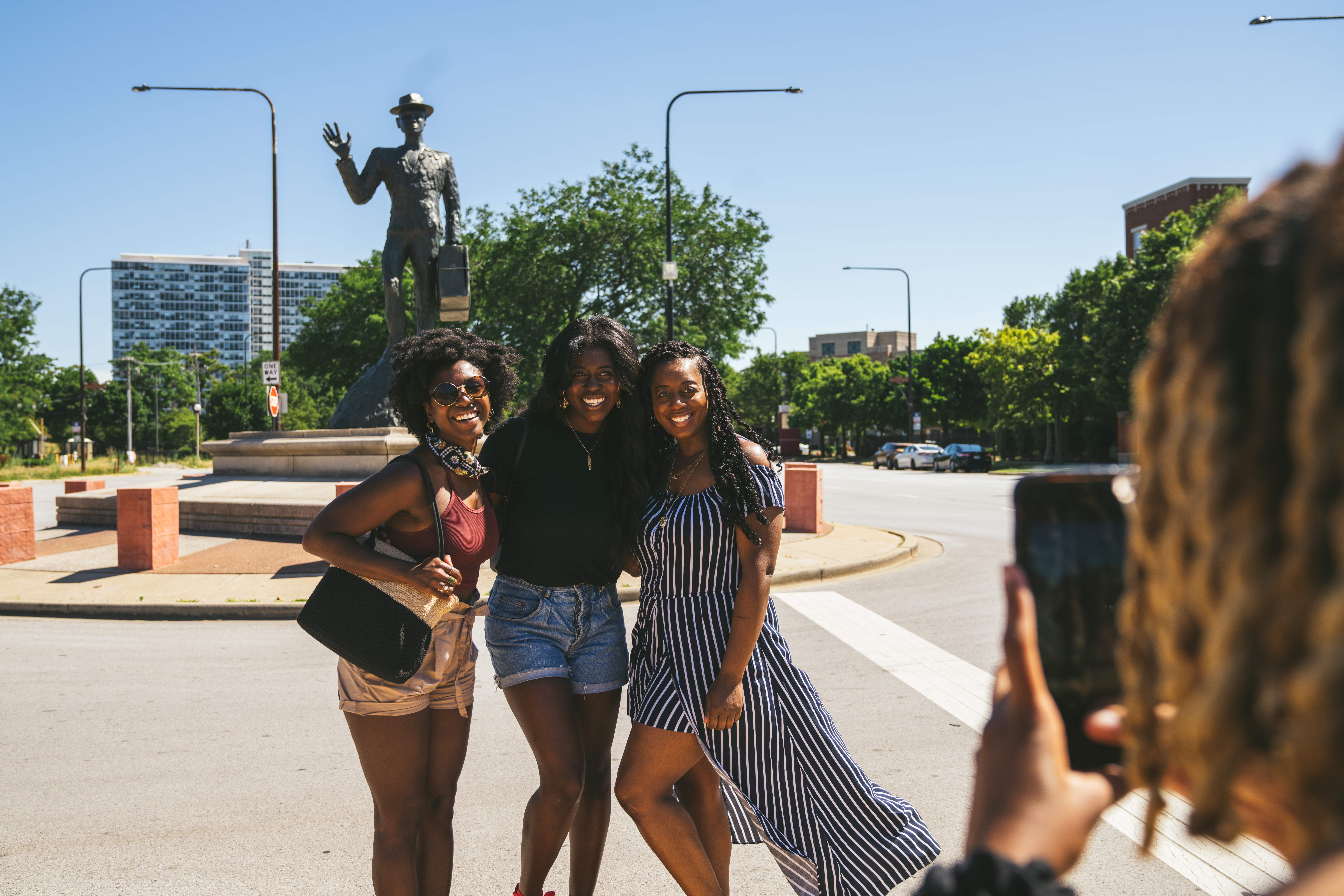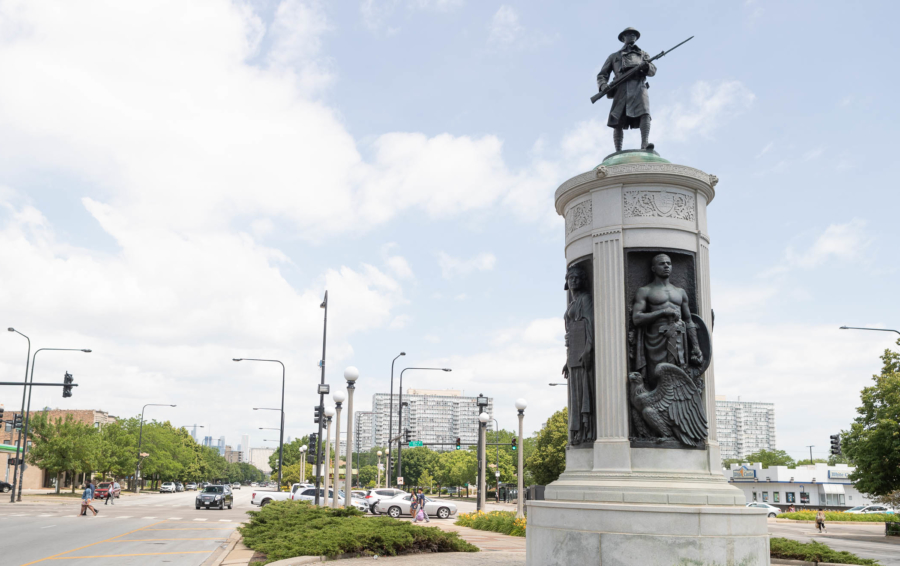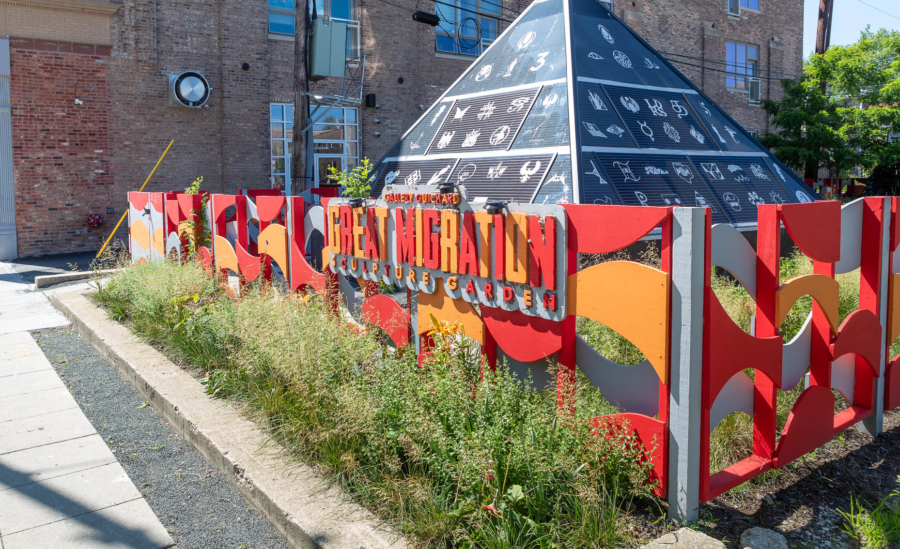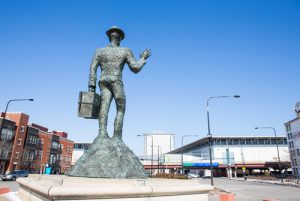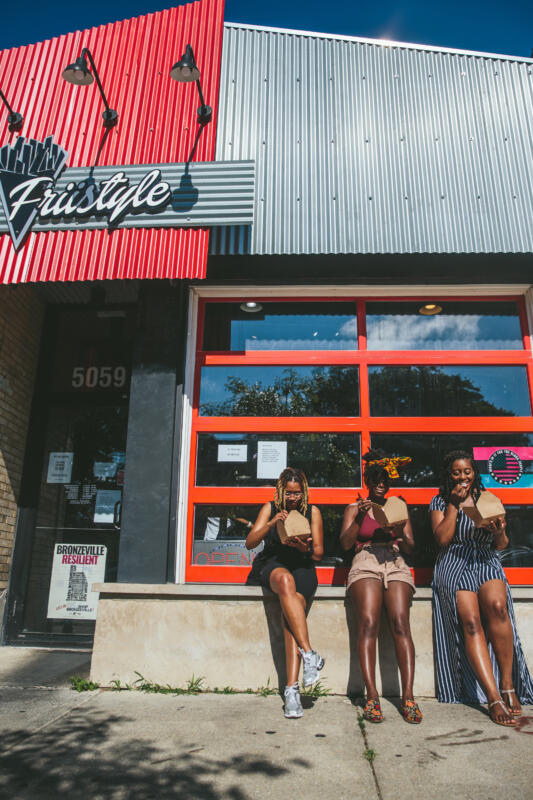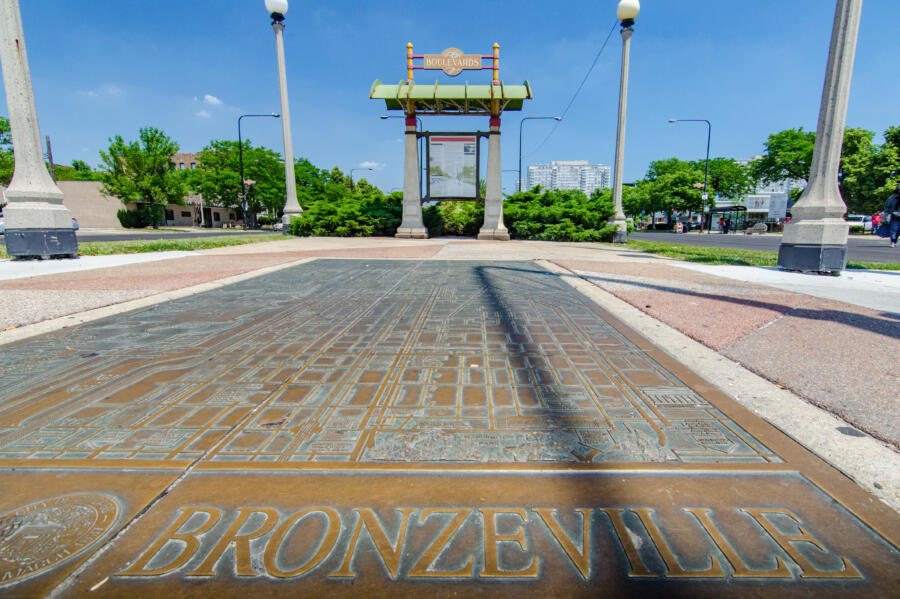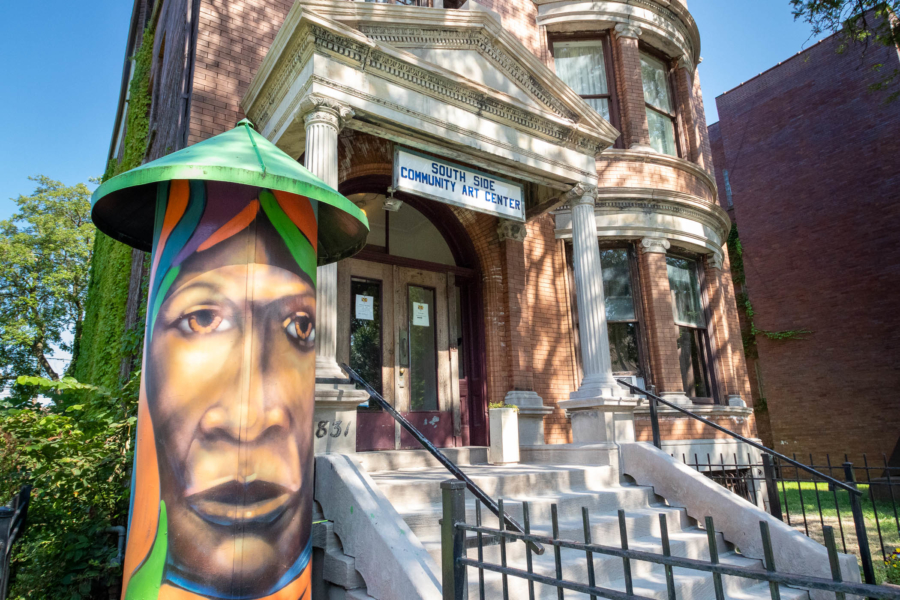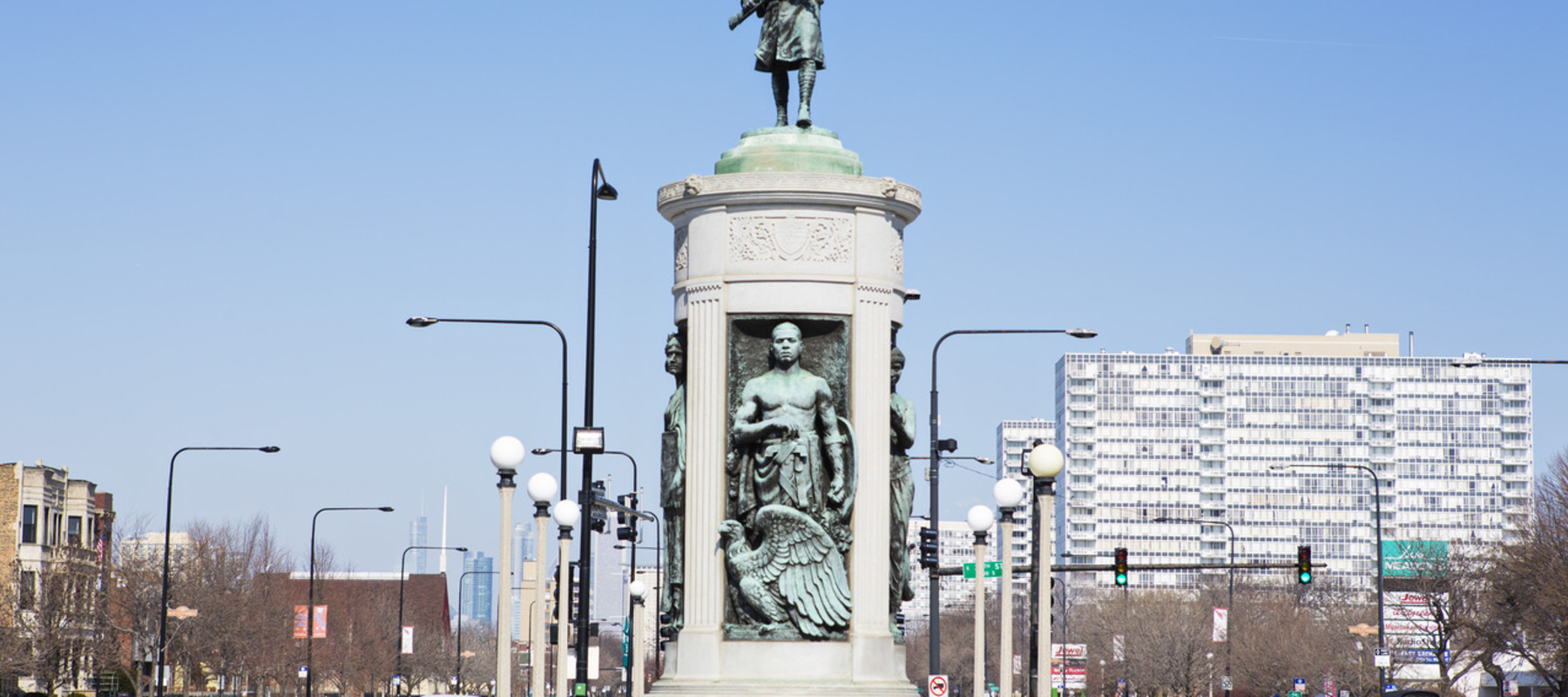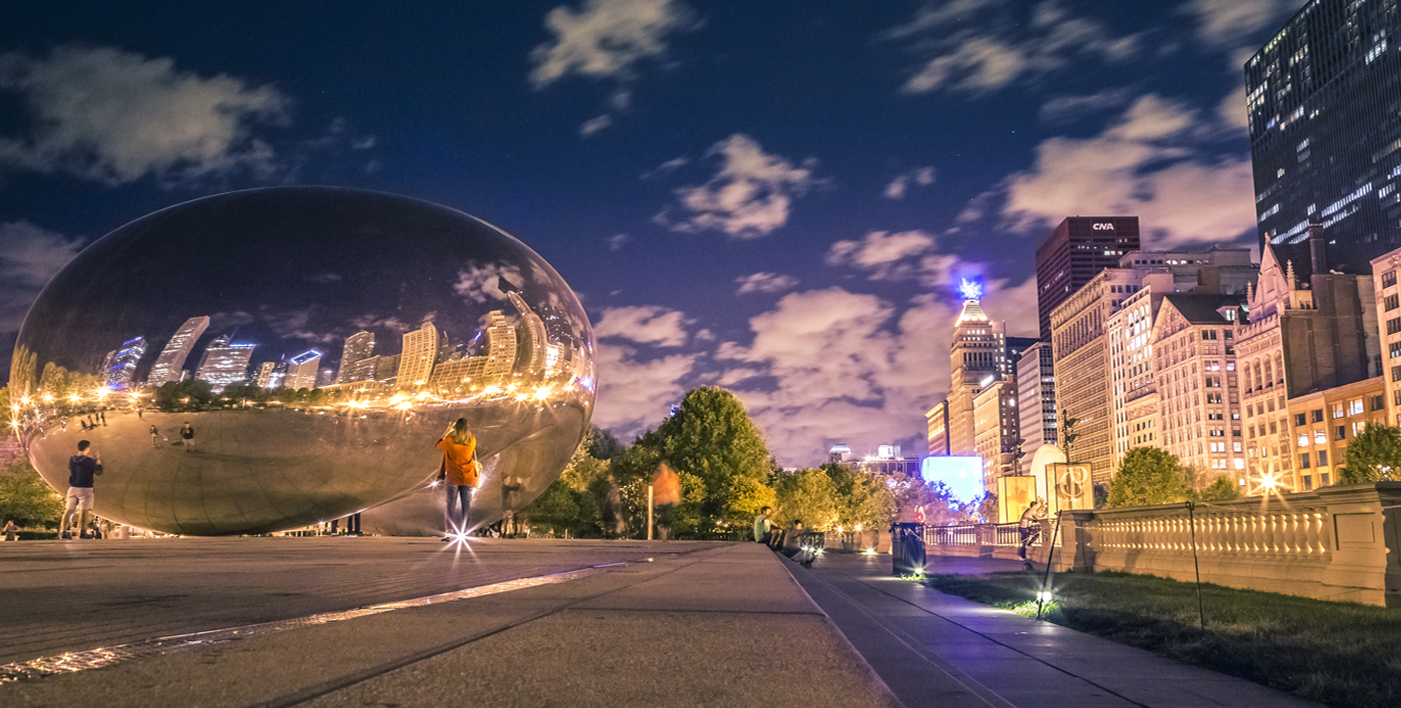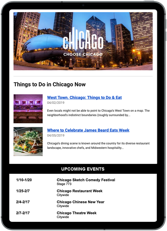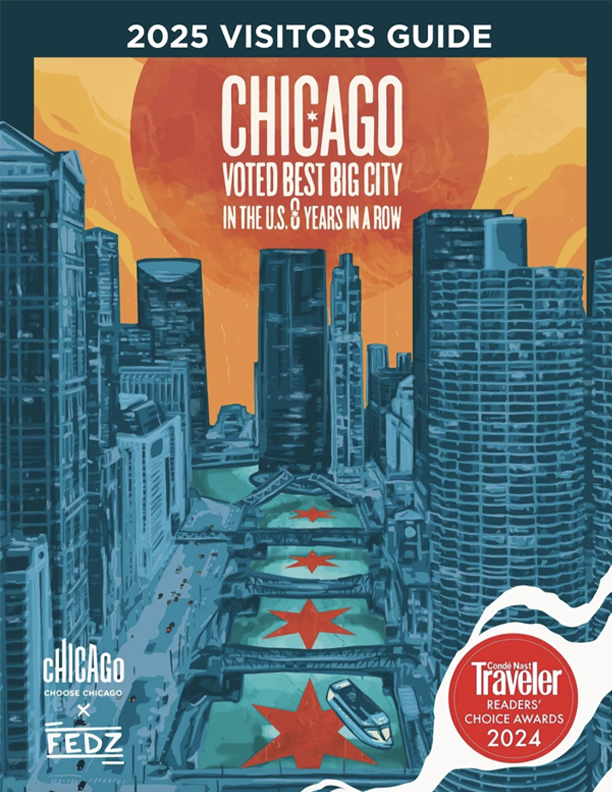Welcome to our new series of self-guided Chicago Greeter tours, presented by Bank of America. Each walking tour is created by a knowledgeable local to showcase their favorite hidden gems and fascinating history behind Chicago’s unique neighborhoods.
This tour is based on one created by Roy Malone, who was born and raised in Chicago’s landmark Bronzeville neighborhood. His tour of the neighborhood celebrates the area’s rich history, notable residents, and legacy as a hub for African American life and culture.
Walking tour of Bronzeville
The Bronzeville neighborhood is where many African Americans settled after migrating to Chicago to escape the oppression in the South between World War I and 1970. The area quickly became a hub for musicians, authors, journalists, artists, historians, athletes and singers. Today, the community is one of the nation’s most significant landmarks of African American urban history.
Our tour starts at the Bronzeville Gateway on 24th Street and King Drive. This structure, stretching from one side of the street to the other, marks the entrance into Bronzeville.
Walk two blocks south to see the Monument to the Great Migration, a bronze statue located at 26th on the King Drive median. It is a tribute to the thousands of African Americans who came to Chicago from the South in search of freedom and opportunity.
Also on King Drive, the Bronzeville Walk of Fame includes 92 bronze plaques embedded in the sidewalks from 25th Street to 35th Street. They honor influential African Americans and Bronzeville residents, including Gwendolyn Brooks, Sam Cooke, Ida B. Wells, and more.
At the corner of 31st Street and King Drive is Olivet Baptist Church. It’s the second oldest African American church in Chicago and the oldest African American Baptist church in the city going back to its organization in 1850.
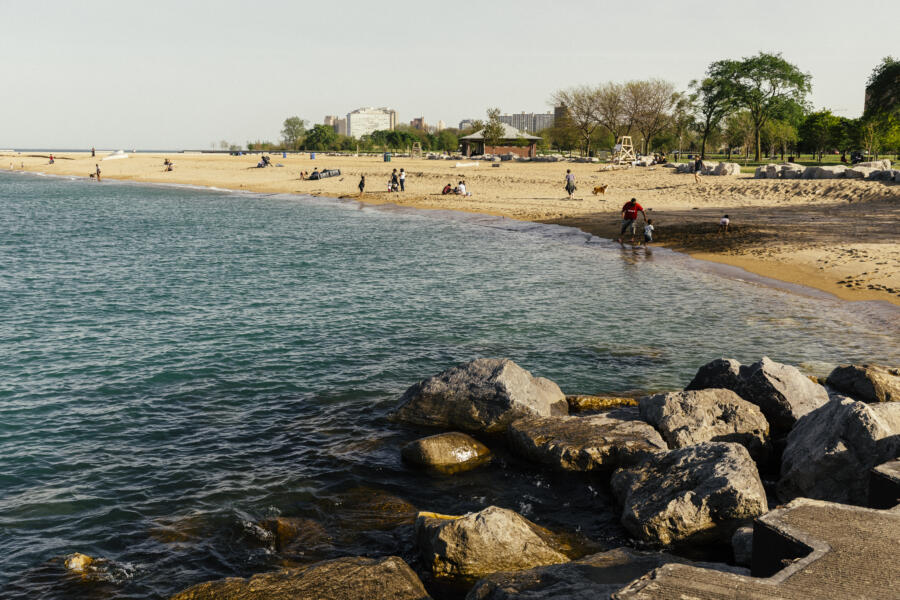
At this point, you can continue east or west on 31st Street. Those traveling east can enjoy the benefits of Lake Michigan. The Margaret Burroughs Beach is located at the end of the street. Burnham Park extends along the lakefront from 14th Street to 56th Street.
Those who decide to go west will go one block on 31st Street and turn left on Calumet Avenue. Calumet Avenue is my favorite part of this neighborhood. There is history on this street that goes back to the Civil War. Notice all the greystone and brownstone mansions, erected when this area of the city was being developed in the 1880s.
Continuing south, stop at 3213 S. Calumet to see Roloson Row, the only townhomes designed by Frank Lloyd Wright.
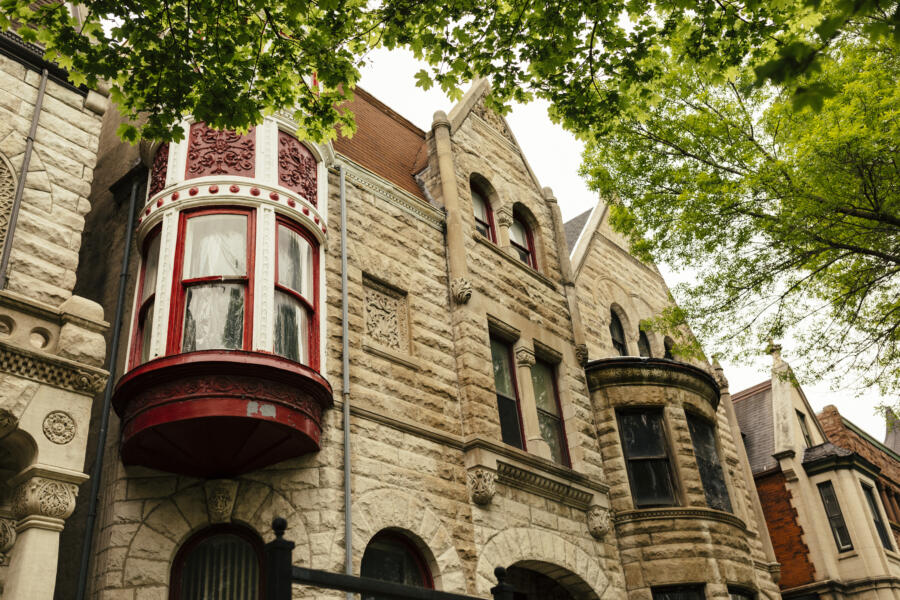
Stop at the schoolyard at the corner of 32nd and Calumet. This site has been the location of several archeological excavations. The barracks of Camp Douglas, where Union soldiers were trained for battle during the Civil War, stood here when the camp opened in 1861. The camp also served as a prisoner of war camp for captured Confederate soldiers.
Cross 35th Street east to the median. The Map of Historic Bronzeville is located there. This bronze slab, installed in the sidewalk, highlights locations of landmarks, events, and people from the community’s past.
The World War I Victory Monument can be seen in the median immediately south of the map. This statue of a WWI doughboy honors African Americans of the 8th regiment national guard.
On the southeast corner of King Drive and 35th is the historic Supreme Life Building. It was the headquarters of the Supreme Life Insurance Company, founded in 1919. It was the first African American-owned insurance company in the northern United States and ultimately became the largest African American-owned business in the northern States. In 1998, the Supreme Life Building was designated a Chicago Landmark.
The home of educator, journalist, and early leader in the civil rights movement Ida B. Wells is located at 3624 King Dr. She was the most famous Black woman in America during her lifetime. This is the last stop of our tour, but there is so much more to do and see in Bronzeville.
Find more things to do and see in Bronzeville.
Chicago Greeter: free guided tours
Taste, shop and explore the neighborhoods with a friendly local as your guide. Explore rich histories, diverse cultural traditions and hidden treasures. See sides of the city you may not have adventured out to on your own, and take away a truly authentic Chicago experience. Greeter visits are customized based on your choice of neighborhoods, language and interests.

